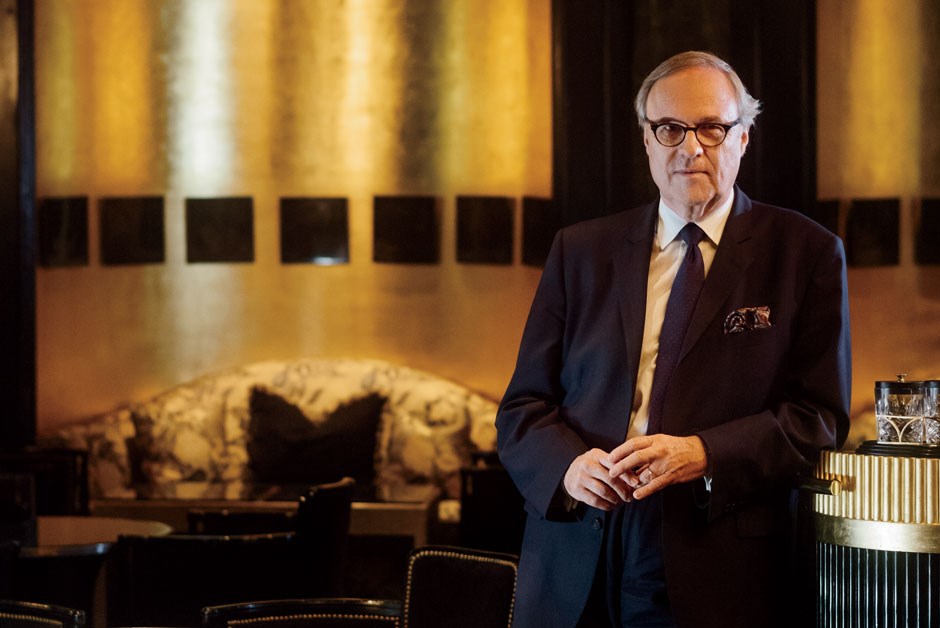London
LONDON
Pierre-Yves Rochon
London’s restored icon on the Strand, The Savoy, pulls off British pomp and ceremony in the most modern of ways.
In London there is no other hotel that holds as much English cultural capital as The Savoy, A Fairmont Managed Hotel. It’s where Winston Churchill met with his dining club every other Thursday; a young Princess Elizabeth first appeared with her then-husband-to-be, Prince Philip of Greece; and The Beatles famously ordered porridge and pea sandwiches from the restaurant. When the hotel closed in 2007 for a three-year renovation, the task of reinventing the crown jewel of the Strand fell to renowned designer Pierre-Yves Rochon – a man on whom the irony of a Frenchman designing a hotel that epitomized English luxury was not lost. “When I began, my main concern was, of course, to respect the hotel,” he explains. “And change-wise, to be as British as I could.”
Rochon, whose firm, PYR, is based in Paris with offices in Chicago, was selected on precedent. His hotel restorations in France and elsewhere demonstrate a visionary ability to reflect history through a modern lens. His keen sense of color, arrangement and finish effectively give his spaces a charming antique character without ever feeling old-fashioned. In short, he convincingly sweeps you to another era – whether or not that era actually existed.
In the pre-renovation Savoy, Rochon had two period influences to work with: classical Edwardian and 1930s Art Deco. The mix of these styles is represented throughout the hotel, from the elegant guest rooms overlooking the Thames to the glamorous black-and-gold Beaufort Bar.
“Do you know many hotels around the world that have these two strong identities?” he says. “I decided to keep them and design around them.”
And how were the reviews of the Frenchman’s work? Let’s just say that when Rochon toured the finished property with Prince Charles, the Royal exclaimed that if his grandmother were still here today, she would have been very pleased to come back to The Savoy. “That was, for me, a nice thing to receive,” says Rochon.

LACQUERED LIFTS
“One of the elements from the previous design that surprised me was the elevator cab,” says Rochon. “The hotel has three elevator cabs completely lacquered in Chinese design. One is red, one is blue and gold, and one is a deep green. It’s very unusual to find this level of ornamentation in a hotel elevator. I was so impressed that we decided to keep them. Even today, they are in very good condition.”

REFRESHED FRIEZE
“When I’m doing a renovation on a historic hotel, my responsibility is to not destroy its past but to bring it into the future. One of the elements I wanted to keep was the Greek-inspired frieze in the lobby, called “An Idyll of a Golden Age.” It had been painted very dark and was very dull. To refresh it, we painted the background a light celadon green – a very British color – that brings back the life to this golden age.”

TEAROOM TRANSFORMED
“It was important to me to preserve the tradition of high tea at The Savoy, but when I first walked into the Thames Foyer, I found it huge and without life unless the room was full. So I decided to put a gazebo in the middle. It creates smaller corners, so you never feel alone. The gazebo has many possibilities. You can have a piano player, you can do performances. I really think the Thames Foyer is the heart of The Savoy.”

COLONIAL INFLUENCES
“To reach the high tea, you must pass through the Upper Thames Foyer. That area before had no identity. And where does tea come from? From India and from China. So we put these countries’ designs – the fabric of the wall coverings, the paintings, the elephants – alongside English furniture to tell a story of England’s colonial history.”

TOUCH OF THE THAMESR
“One of the focal points of the renovation of The Savoy is the Lalique fountain at the entrance of the hotel. It was a big fight for me to impose this crystal fountain, only because it was quite expensive. Why the Lalique fountain? First, it represents the hotel’s 1930s aesthetic, and second, we are next to the river, so why not have fish coming from the River Thames made out of crystal?”

